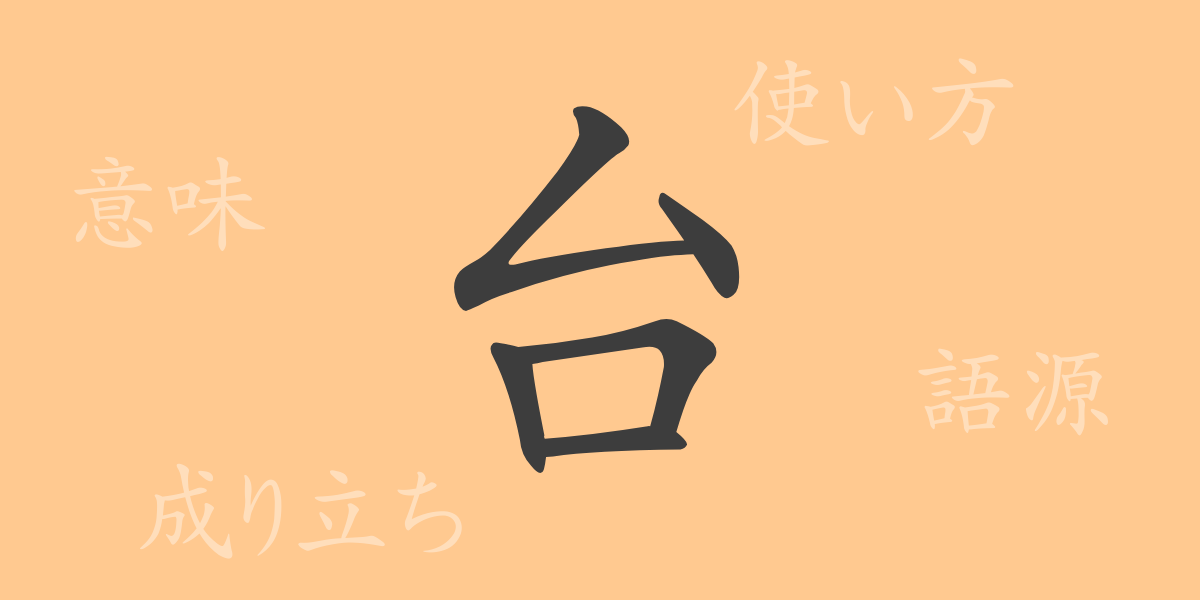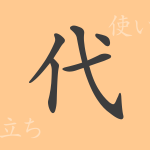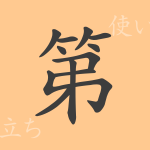Each Kanji character in Japanese holds a depth of meaning rooted in its form and history. “台” (だい) (dai) is one such commonly used kanji, pervading various aspects of daily life. This article explores the kanji “台,” from its etymology to its contemporary uses, reading, stroke count, and associated phrases and idioms. Join us on a journey into the depth of the Japanese language.
Origins of ‘台’ (だい) (dai)
The kanji “台” originated in ancient China, used initially to denote a tall building or foundation. Originally written as “臺,” it depicted a person on a roof with the lower part representing earth. Over time, it simplified to “台,” but the fundamental concept of a height or base remains preserved.
Meanings and Applications of ‘台’ (だい) (dai)
“台” has multiple meanings and uses depending on the context. It generally refers to a high place or the surface of something, as well as the base or foundation of objects. For example, “台所” (だいどころ) (daidokoro) refers to a kitchen, a place for cooking in a home, and “台風” (たいふう) (taifuu) refers to a typhoon, a meteorological phenomenon. It is also used in counting machines or large objects, as in “一台の車” (いちだいのくるま) (ichi dai no kuruma), meaning one vehicle.
Readings, Stroke Count, and Radical of ‘台’ (だい) (dai)
The kanji “台” has several readings in Japanese:
- Readings: On’yomi are ‘タイ’ (tai) and ‘ダイ’ (dai), Kun’yomi include ‘うてな’ (utena) and ‘しもべ’ (shimobe).
- Stroke Count: “台” is a 5-stroke kanji.
- Radical: The primary radical is ‘厶’ (mu), although ‘口’ is also noted; ‘厶’ is typically considered the radical for “台”.
Phrases, Idioms, and Proverbs Using ‘台’ (だい) (dai) and Their Meanings
There are numerous idioms and phrases involving ‘台’. For instance:
- ‘台無し’ (だいなし) (dainashi) – Meaning something is ruined or spoiled, depicting efforts or plans going to waste.
- ‘高台に登る’ (たかだいにのぼる) (takadai ni noboru) – Literally climbing a high platform, metaphorically referring to rising in status or position.
Summary on ‘台’ (だい) (dai)
The kanji ‘台’, despite its simple appearance, holds diverse meanings and applications. Its usage in the Japanese language reflects the depth cultivated through culture and history. From “台所” to “台風,” reconsidering the ‘台’ around us deepens our understanding of Japanese. This exploration of ‘台’ hopefully enriches your appreciation of the language’s complexity.

























